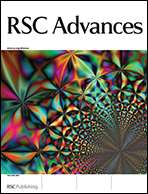A generalized electrodynamics model for surface enhanced Raman scattering and enhanced/quenched fluorescence calculations
Abstract
A generalized electrodynamics model is proposed to describe the enhancement and quenching of the fluorescence signal of a dye molecule placed near a metal nanoparticle (NP). Both the size of the NP and quantum yield of the dye molecule are crucial in determining the emission intensity of the molecule. Changing the size of the metal NP will alter the ratio of the scattering and absorption cross sections of the metal NP and consequently results in different enhancement or quenching effect to the dye molecule. A dye molecule with a reduced quantum yield indicates that the non-radiative channel is dominant in the decay of the excited dye molecule and the amplification of the radiative decay rate will be easier. In general, the emission intensity will be quenched when the size of the metal NP is small and the quantum yield of the molecule is close to unity. A significant enhancement factor will be obtained when the quantum yield of the molecule is small and the particle size is large. When the quantum yield of the dye molecule is less than 10−5, the model is simplified to the surface enhanced Raman scattering equation.


 Please wait while we load your content...
Please wait while we load your content...